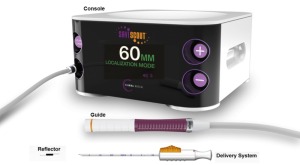By Dr. Karen Kostroff and Dr. Nina Vincoff
Breast cancer, the most common cancer among women, is a critical women’s health issue that affects one in eight women in the United States. While any cancer diagnosis can be devastating, the processes used to diagnose and treat breast cancer can be particularly stressful, uncomfortable and anxiety provoking. Mammograms, breast biopsies, breast surgery, chemotherapy and radiation therapy all have physical and psychological impacts on women, and these effects frequently occur when breast cancer patients are actively engaged in career and family-raising activities. While therapeutic advances have helped to improve outcomes and survival for women with breast cancer, innovative technologies also have an important role to play in improving these patients’ journey from diagnosis, through treatment and to life as a breast cancer survivor.
Northwell Health, New York State’s largest healthcare provider, has a mission to improve the health of the communities it serves. Key to achieving this mission is ensuring that advanced technologies are accessible to patients throughout the network and not only at larger hospital centers. Northwell’s adoption of an advanced technology for localization of non-palpable breast lesions offers a roadmap for implementing medical innovation across a large healthcare network in ways that benefit patients, physicians, clinical operations and the organization’s bottom line. It also demonstrates how medical technology innovation continues to play an important role in protecting, preserving and improving women’s health.




Ad Statistics
Times Displayed: 22204
Times Visited: 440 Stay up to date with the latest training to fix, troubleshoot, and maintain your critical care devices. GE HealthCare offers multiple training formats to empower teams and expand knowledge, saving you time and money
Localization of non-palpable breast lesions
Breast conserving surgery (BCS) enables women to retain breast tissue and is an important alternative to radical mastectomy. Effective BCS requires accurate identification and localization of the tissue that is to be excised. For many years, this was achieved by placing a wire into the lesion through the patient’s skin. Despite the seeming simplicity of this approach, it has several limitations. Because the wire protrudes from the breast it needs to be placed the day of surgery in order to prevent it from migrating or dislodging. Performing the wire placement and surgery on the same day can increase patients’ psychological stress and physical discomfort. This additional procedure on the day of surgery – a day that is often fraught with anxiety for patients and their families – can be an additional source of stress.

